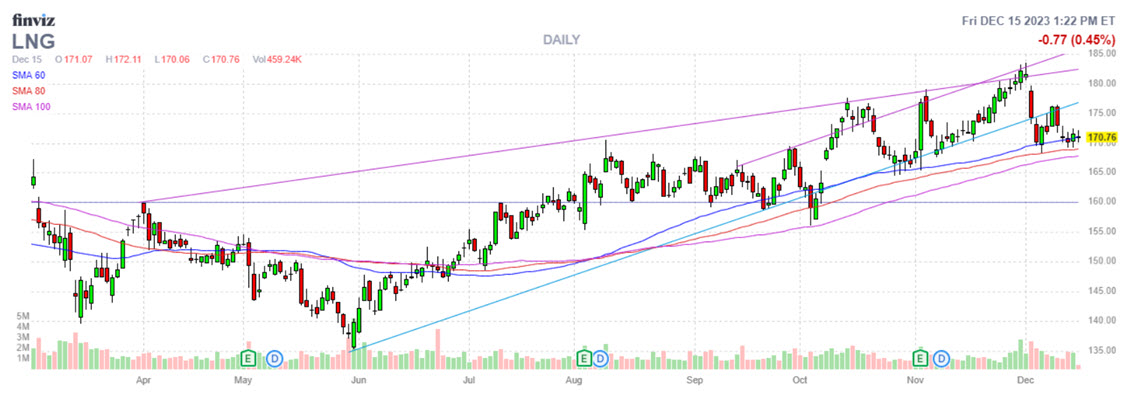Despite a late-September surge, oil has built a more than 11% year-to-date deficit
Subscribers to Chart of the Week received this commentary on Sunday, December 17.
With mere weeks left in 2023, prudent, contrarian investors are already looking ahead, to kick off 2024 in the most profitable way possible. Our highly-anticipated Schaeffer’s Top Stock Picks for 2024 report will be published next week, and just last week in this space, Big Tech’s outperformance was put under the microscope. However, another noteworthy addition to the list of stocks worth keeping close to the vest has surfaced, with an impressive historically bullish performance, facing off with some long-term concerns.
The sector in question is oil, gas, and coal, an admittedly wide net but still peers in the broader energy sector. Despite a monumental late-September surge, oil futures have built a more than 11% year-to-date deficit. A steep fall from those September highs has weighed heavily among the commodity. Per MarketWatch, oil futures have entered ‘contango,’ where prices for oil futures contracts that expire several months from now are higher than prices today. The last time this occurred was the height of the pandemic. Repeated production cuts from have done little to tip the scales. The good news for contrarian investors is that these global headwinds puts stocks like Pioneer Natural Resources (PXD) and Enterprise Products Partners (EPD) at intriguing entry points headed into 2024.

Per the table above, four different energy names make the list of White’s optimal moving average screen of bullish stocks. The criteria to make the list include a stock that has moved above the corresponding moving average, been within 80% of the trendline in the past two months, and has experienced at least five signals in the past three years. Averaging a +3% gain following its prior signals and having been positive at least half the time, are also required metrics for the stocks. In other words; this isn’t just an average accumulation of ones’ favorite oil names.
Making the list not one, but three times with three separate trendlines is Cheniere Energy (LNG), which specializes in the liquified natural gas slice of the energy enchilada. LNG has seen historical outperformance after being within one-standard deviation of its 60-, 80-, and 100-day moving averages. Respectively, each trendline has garnered eight, five, and six returns, with an average 21-day move of 4.5%, 6.7%, and 5.7%. This triple threat of moving averages have an up to 83% positive return rate, which bodes well considering the stock’s year-to-date and year-over-year percentages are both comfortably in the black.

Another notable energy giant to monitor is coal mining stock Peabody Energy (BTU), which pulled in the highest average 21-day return on our list at 11.3% for its 100-day moving average. BTU has seen six signals in the last three years, with 67% of these returns positive. Both LNG and Peabody stock – down 10% in 2023 — will have to weigh these flashing bull signals with global efforts to reduce fossil fuels in the next decade. The International Energy Agency (IEA) has said global coal use is expected to reach a record high in 2023 and enter a decline by 2026, while over 300 organizations from over 40 countries released a letter calling on the Biden Administration to abandon its support for Liquefied Natural Gas (LNG) at COP28.
Despite these obvious headwinds, remember that a suddenly-dovish Federal Reserve and constantly-shifting production metrics will be the largest pendulum for how oil and its peers will perform in the coming year. With all of that uncertainty, at the very least we want to use some historical data to tether our risk-reward analysis with what we are comfortable investing in long-term. Regardless of looming long-term headwinds, some energy stocks have outperformed when reaching their current technical climate on the charts, so entering 2024 with a few energy names on your radar may not be the worst move to make.
Image and article originally from www.schaeffersresearch.com. Read the original article here.

